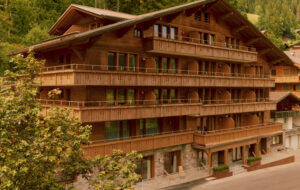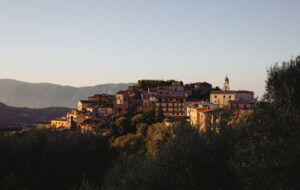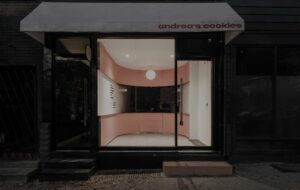Popular with pandemic parenting, the inflatable play-houses are more than just lurid eyesores – their use is bound up with plastic waste and social inequality

Words by Tara Okeke
It is with age and through experience that we learn nightmares assume many forms. In childhood, terrors tend to trend uniform – spectral figures under the bed, school dinners atop the table. In adulthood, the terrain of life becomes subject to a torrent of cruel and unusual punishments – some trivial, others less so (business casual can be a nightmare; casual racism is a nightmare). And then the outliers: some early nightmares resist easy categorisation as objectively terrible – at least to anyone other than yourself – but persist as a blight well into maturity. Some days serve only to school you on the axis that tilts play toward (cushioned) peril. And sometimes the call comes from inside the house – or, more accurately, from outside in the garden. Time to wake up: bouncy castles are a nightmare.
These mainstays of children’s parties, church fêtes and small-town fairgrounds, were last summer heralded as the ‘saviours of pandemic parenting’ by Vanity Fair. Accompanying this lofty declaration were the kinds of market stats that would give Don Draper a headrush: a 126% sales increase in April 2020 compared to April 2019; $53m worth of sales between March and June 2020 alone. And earlier this year, a YouGov poll revealed roughly 2.2 million UK adults intended to hire a bouncy castle across the summer half-term break.
While the number of hires (and sales) climbs ever higher – as a result of a landscape of leisure newly coloured by the long shadow of isolation and, latterly, shades of reintegration – the appeal of the bouncy castle firmly resides in its broadly unchanging nature. You know exactly what you are getting when you buy or hire one: turgid turrets, lurid palettes, a PVC plaything conceived of the illicit embrace between a trampoline and a Victorian jelly illustration.
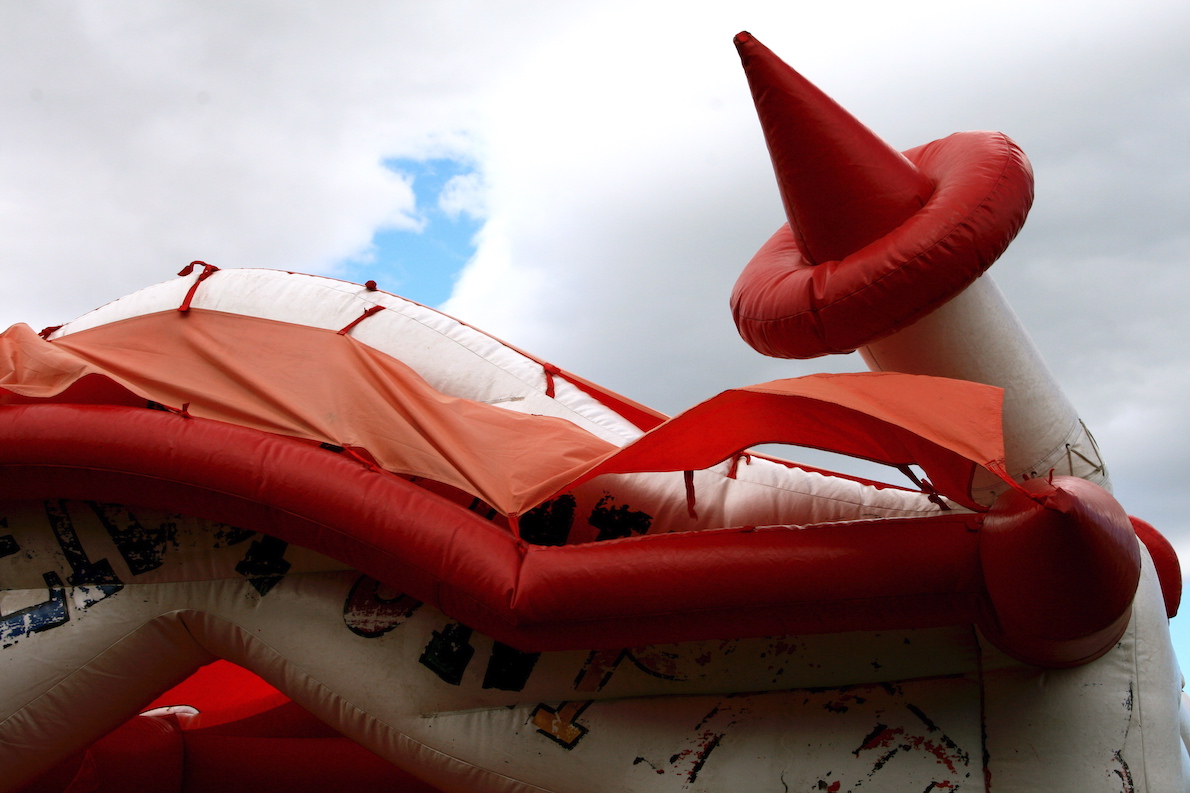
Also unchanging are the major faults: it did not take long for the homespun designs of John Scurlock – the NASA plastics specialist credited for the invention of the bouncy castle – to be mass-produced and for plastic waste to become, in turn, a perennially telegraphed (though far from systematically targeted) issue. For the positive impact of every Wyatt & Jack – the sustainable UK accessories brand upcycling bouncy castles and blow-up pool toys into useful pouches and totes – there is the (far more extensive) negative impact of the jack-all being done by the manufacturers of inflatables to encourage industry-wide recycling initiatives.
And as any kid with limited mobility, or living with chronic pain, or susceptible to sensory overload will tell you: it does not take long for the advertised fun of the bouncy castle to evanesce – for the raucous ascensions and tumbles to feel like they were made for someone else. Having spent part of my youth with a severe spinal curvature – which necessitated surgery, a back brace, long-term physiotherapy and a buffet of prescription medications – I came to regard my body as mostly incompatible with this particular matrix of play. I realised that even the most innocuous of ground you can tread can still pose difficulty, can still wrong-foot you, can still be a waking nightmare to navigate. We move; we move on. But some things are hard to bounce back from – a tweenage spent, in essence, cosplaying as Quasimodo being one of them.
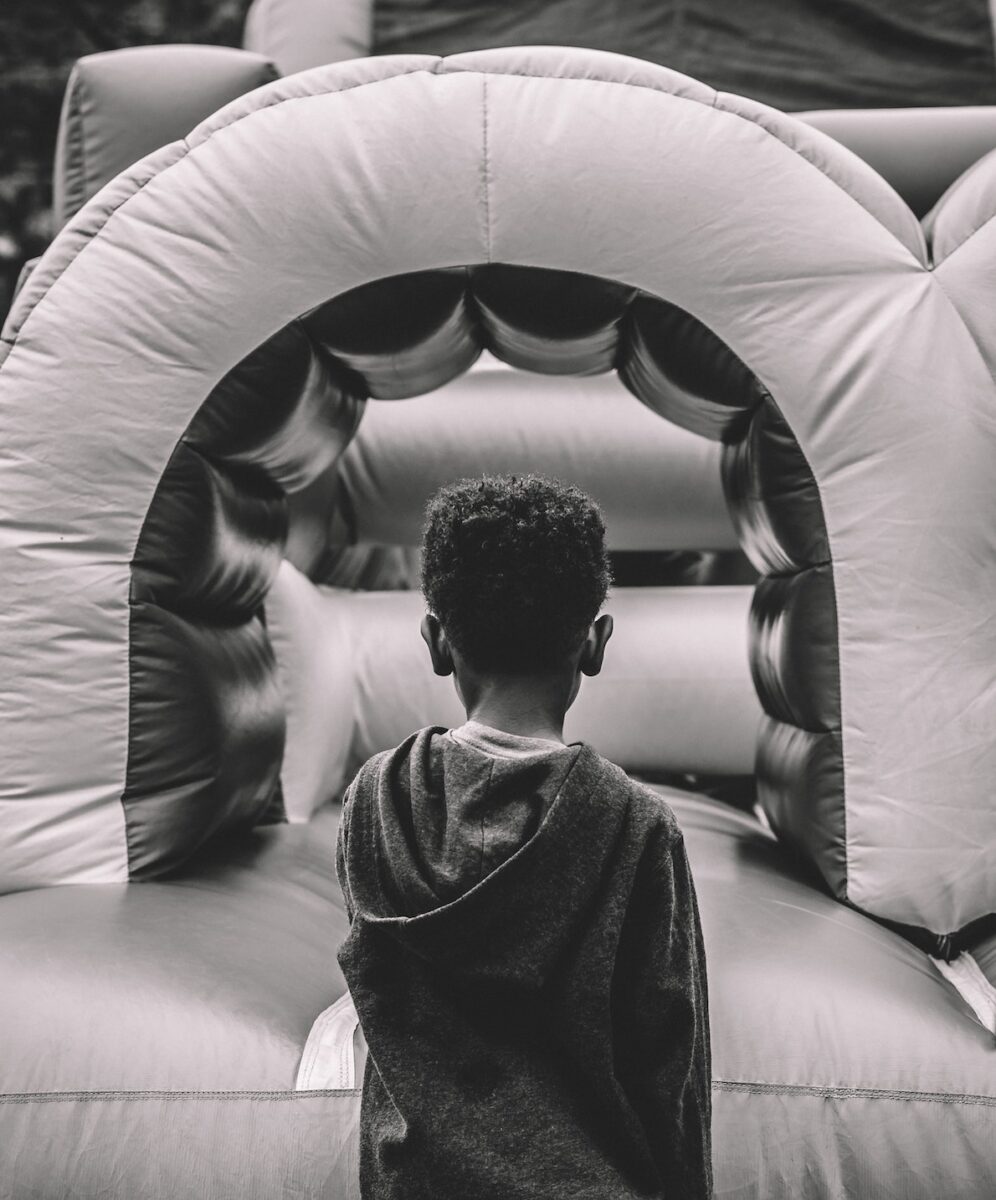
Circling back to that Vanity Fair piece: the overblown headline belies a seam of remarkably grounded parental testimonies – a thread at which you feel compelled to pull. From the confession of a bouncy castle being a ‘stress purchase’ to the communication of the earnest desire, above all else, to make their children ‘happy’: anxieties – both alleviated and precipitated – tethered to these inflatables and, in turn, tethered to matters of finance, of personal capacity, of childcare provision and of concessions made elsewhere unspool in-between the lines.
Mere months separated Vanity Fair’s bouncy castle coverage and the publication of an Office of National Statistics’ report which detailed one in eight British households has no garden – with black Britons being almost four times as likely as white Britons to have no access to a garden or comparable private green space. Manifold structural inequalities long-embedded within housing provision (both in the UK and the US) separate those with the space to provide – and be provided with – easy (albeit fleeting, albeit one-size-fits-all) joy with every jump from those without. And not much at all, really, separates the pain that undergirds nostalgia from the pain that arises out of confronting reality: the dream is not over, it simply never was to begin with.
Tara Okeke is ICON’s new Crimes Against Design columnist
Get a curated collection of architecture and design features in your inbox by signing up to our ICON Weekly newsletter






